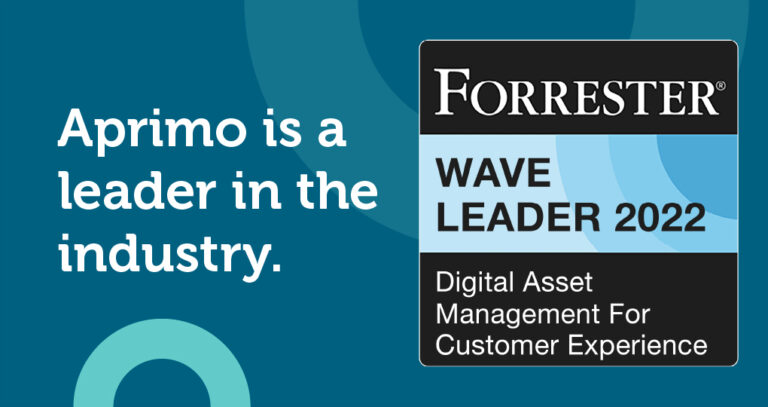Optimizing Cross-Channel Campaigns with Marketing Resource Management (MRM)

Cross-channel campaigns have undeniably become imperative for today’s marketers. After all, your customers are present on a multitude of platforms. You have to meet them there. Eight in ten retail executive leaders believe that providing an omnichannel experience to customers is an opportunity for growth. They’re not wrong; 86% of marketers report that the effectiveness of multi-channel marketing is increasing. However, with more channels comes more responsibility and more resources. That’s why marketing resource management software has become a necessity. Let’s look at how such a system can improve your cross-channel campaigns.

Understanding the Significance of Cross-Channel Campaigns
We’ve already discussed that businesses are jumping the cross-channel marketing bandwagon. But why?
First, it enhances customer engagement. Think of it this way. A customer found your brand through Google, signed up for your email newsletter, and followed you on social media. If you reach out to that customer consistently through all three channels, you’re staying on top of their mind.
Second, it provides a seamless experience for your consumers. A customer can use their channel of choice to connect with or buy from you.
A culmination of multiple channels also increases the number of touchpoints with potential customers. Every touchpoint presents an opportunity for a sale.
Introduction to Marketing Resource Management (MRM)
It’s in the name. Marketing resource management means managing resources for marketing activities. These resources range from budgets, campaign assets, project timelines, and supplies to people and technology. An MRM solution provides a centralized platform to manage and optimize all these resources.
It’s a one-stop solution for all marketing stakeholders to connect with each other. They can brainstorm ideas, collaborate, manage tasks, and track progress toward campaign goals. Even better, they can use the analytics from the platform for future decision-making.


Key Features of an Effective MRM System
A marketing resource management tool should have the following features for it to be effective.
-
Centralized asset management: When you’re working on a marketing campaign, you don’t want the digital assets to be scattered across multiple folders on different computers or in people’s email inboxes. Instead, you need a central repository. An MRM system should provide that.
-
Workflow management: The MRM platform should also facilitate the creation of workflows for different tasks related to the marketing campaign. For instance, you may have a workflow for creating and approving social media posts and another one for designing and approving email templates, etc.
-
Version control: Marketing resources, especially those for the web, undergo many changes. Version control helps keep track of these changes so you know which version is the latest and who made the changes. It also helps to revert to previous versions if necessary.
-
Real-time analytics: Numbers are key to marketing. The MRM platform should have an analytics dashboard where you can see real-time data on your key performance indicators (KPIs) for data-driven decision-making.
-
User permissions: Role-based permissions give different levels of access to users depending on their tasks. For instance, designers can upload assets but not publish them, while marketing managers can approve and publish assets.
Integration of MRM into Cross-Channel Campaigns
How does an MRM system fit into the bigger picture of marketing campaigns across different channels? Here are some examples:
-
Communication across teams working on different channels, such as social media, email marketing, and website content
-
Seamless collaboration between in-house and remote team members
-
Tracking and analysis of campaign performance across channels to inform future strategies
-
Maintaining consistent brand messaging across channels


Challenges in Cross-Channel Campaign Optimization
When you work with multiple channels, hurdles and bottlenecks are inevitable. But there’s a way around every one of them.
The first issue is the lack of data standardization across channels. Each platform has its own set of metrics and terminologies, which makes it difficult to compare data and gain insights.
Another challenge is the sheer volume of data. With so many channels generating different types of data, it can be overwhelming to manage and analyze them effectively. Fortunately, a reliable MRM system like Aprimo makes data handling a breeze.
Since each channel may attract a different type of audience, you also need to segment your data for targeted campaigns. Similarly, customer behavior may change. Marketing teams then have to adapt to these changes in real time.
The regulatory compliance and data privacy regulations also differ across channels. For instance, sending email newsletters has different legal requirements than posting on social media.
A robust MRM system can help resolve most of these challenges. Its collaborative nature lets teams work in tandem to produce the right content for each platform. Plus, automated approvals save time in the process.
Frequently Asked Questions
How does MRM contribute to cross-channel marketing efficiency?
An MRM system provides a central location for all assets. It also streamlines workflows and helps create a cohesive strategy across channels. The real-time analytics further allow for quick adjustments to campaigns in the wake of changing market or consumer trends, ensuring maximum efficiency.
Can MRM be integrated with different marketing channels?
Yes, you can integrate MRM with multiple channels, including email marketing, social media, online ads, website content management systems, etc. The key is to choose a platform that offers a variety of integration options.
What challenges can arise in cross-channel campaign optimization, and how does MRM address them?
Inconsistency and lack of collaboration between teams, data silos, and disparate technology systems can all hamper cross-channel marketing efforts. An MRM system tackles these issues by acting as a centralized platform for all collaboration and data management.
Are there proven best practices for implementing MRM in cross-channel campaigns?
First and foremost, follow a step-by-step implementation approach. Take industry benchmarks as your starting point, and then customize the system to suit your specific needs. Plus, involve all stakeholders, encourage open communication, review and optimize the system regularly, select the right MRM software, and train your teams for optimal use.




